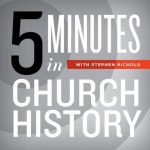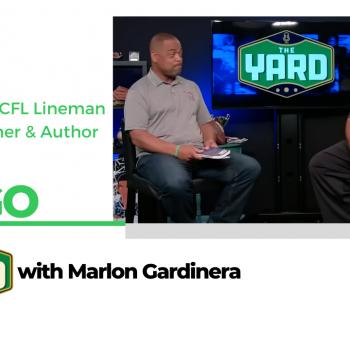
They say that “one picture is worth a thousand words.”
Sometimes, on rare occasions, one word is worth a thousand pictures. As you are about to hear in this PODCAST, this is one of those occasions.
In this case, that one word is “Gethsemane.”
As in the Garden of Gethsemane, that very garden to which John referred when he wrote, “On the other side (of the Kidron Valley) there was a garden, and Jesus and his disciples went into it.” (John 18:1)
I would not be overstating the case to suggest that everything you and I need to understand about the Gospel is contained in that one word all-telling, “Gethsemane.”
Gethsemane, ironically a place of peaceful repose, first pops up on our radar in Matthew’s account of this anything-but-peace-filled night. He wrote with no explanation, “Then Jesus came with them to a place called Gethsemane, and said to the disciples, ‘Sit here while I go and pray over there.’” (Matthew 26:36)
No explanation was needed, at least for Matthew’s original readers. All would have been abundantly familiar with the modest-sized cultivated enclosure nestled snuggly into the base of the Mount of Olives. A scenic/welcome retreat from the hustle and bustle of Jerusalem in general and the Temple complex in particular.
Now, courtesy of this podcast, let me take you there.
First off, as John writes, Gethsemane is a garden located just outside of the Kidron Valley:
When he had finished praying, Jesus left with his disciples and crossed the Kidron Valley. On the other side there was a garden, and he and his disciples went into it.
Now Judas, who betrayed him, knew the place, because Jesus had often met there with his disciples. So Judas came to the garden, guiding a detachment of soldiers and some officials from the chief priests and the Pharisees. They were carrying torches, lanterns and weapons. (John 18:1-3)
Secondly, we know that the garden was situated, literally in the shadow of the Temple in Jerusalem, just to the garden’s western side; and to the east was the Mount of Olives. And speaking of “shadow”, the very name “Kidron” means “murky, dark, or black”… so take that for whatever it may mean.
But, we learn in Ezekiel 11 that the glory of God left the presence of His people, crossed the Kidron Valley, and even paused at the Mount of Olives before leaving… and not returning until appearing before the shepherds on the evening of Jesus’ birth.
Similarly, when Jesus was about to enter Jerusalem before what we call His Triumphal Entry, He stopped and paused to pray… and even weep over His beloved city.
And, we learn in Zechariah 14 that when Jesus returns, He will first step foot upon the Mount of Olives, so this region surrounding Gethsemane is poignant as much as it is prevalent and important to world history – both past and future.
My point is this: don’t simply let the words “Kidron Valley” just pass by without note, especially within the context of Jesus and His disciples crossing through it on this murky, dark, black, even sinister night, on His way to Gethsemane.
Now, what about the very word “Gethsemane”?

It is a compound word, both in Aramaic and in Hebrew, the first part – “Gath“ – means “press”. “Shemen”, the second part of the word, means “oil”, as in olive oil, which was “liquid gold” in Jesus’ day. Put all this together, and the location where Jesus went that night was known as the “Garden of the Oil Press”.
So, let’s look at the process by which olives were harvested and pressed. Believe it or not, harvesting olives – liquid gold in Jesus’ time – began with a BEATING. People would take long sticks, like lashes, beating the olives from their branches onto a sheet placed beneath the trees. This makes you wonder what the Disciples thought, then, when in just a matter of hours after traversing the Kidron Valley and entering Gethsemane, they witnessed this:
Now the men who held Jesus mocked Him and beat Him. (Luke 22:63)
After being beaten down from the tree, the olives would be poured out into a basin. Then, a heavy stone would be rolled around that basin until each olive was cracked open and crushed. Not unlike the prophesy that Isaiah wrote and the Disciples were undoubtedly aware of:
But he was pierced for our rebellion, crushed for our sins. (Isaiah 53:5)
Step three of the process involved placing the crushed olives into porous sacks or baskets, such as a burlap bag. Then these sacks would be piled up, one upon another. On the top of each stack of sacks, they would place a heavy stone, aptly called the top stone. All this would stand over a vat meant to collect the oil as it drained out of the sacks.
Next, a niche would have been cut into the nearby wall, just large enough for a beam of wood to be inserted into it and allow the beam to swing up and down. This beam would be the one angled up, resting on the top stone; and hanging from the end of this beam would be some additional very heavy stone weights. This weight, along with the pivoting beam, would add enough pressure to squeeze every last bit of oil from the crushed olives. At first sight, it would actually appear as if the sacks were sweating drops of oil from their pores.
This was the process of the New Testament olive press as it pressed the oil from the olives… or as in Hebrew Gath-Shemen, or Gethsemane.
It was at the Garden of Gethsemane that Luke wrote about in Luke 22:39-40,
Jesus went out as usual to the Mount of Olives, and his disciples followed him. On reaching the place, he said to them, “Pray that you will not fall into temptation.”
Jesus knew that what they were about to see would be life-altering and He desperately didn’t want them to fall into the temptation of abandoning their faith. Jesus knew that a mob would be coming soon, as we read in Mark 14:43-49,
Jesus was still speaking, when Judas the betrayer came up. He was one of the twelve disciples, and a mob of men armed with swords and clubs were with him. They had been sent by the chief priests, the nation’s leaders, and the teachers of the Law of Moses. Judas had told them ahead of time, “Arrest the man I greet with a kiss. Tie him up tight and lead him away.”
Judas walked right up to Jesus and said, “Teacher!” Then Judas kissed him, and the men grabbed Jesus and arrested him.
Someone standing there pulled out a sword. He struck the servant of the high priest and cut off his ear.
Jesus said to the mob, “Why do you come with swords and clubs to arrest me like a criminal? Day after day I was with you and taught in the temple, and you didn’t arrest me. But what the Scriptures say must come true.”
In describing these events, John adds an amazing detail from his perspective:
Jesus, knowing all that was going to happen to him, went out and asked them, “Who is it you want?”
5 “Jesus of Nazareth,” they replied.
“I am he,” Jesus said. (And Judas the traitor was standing there with them.)6 When Jesus said, “I am he,” they drew back and fell to the ground.
7 Again he asked them, “Who is it you want?”
“Jesus of Nazareth,” they said.
8 Jesus answered, “I told you that I am he. If you are looking for me, then let these men go.” (John 18:4-8)
Did you catch that? Even the mob – all 600 men there – who came to arrest Jesus “drew back and fell to the ground” when Jesus uttered those two powerful words: I AM. I AM, God’s unique and holy name used first in Exodus 3 from God’s voice in the burning bush, when Moses asked God, “What is Your name?”
Yet, they had a job to do… to arrest Jesus, as Luke writes:
Then seizing him, they led him away and took him into the house of the high priest.
The high priest’s name was Caiaphas, whom we will get to know next week.
But, as we wrap up this single tragic event, we look at one last detail that Mark includes in his Gospel:
Then all his disciples deserted him and ran away. (Mark 14:50)
They ran away, leaving Jesus all by Himself to face His darkest hour completely abandoned and all alone, as the mob led Him out of the “Garden of the Olive Press”.













